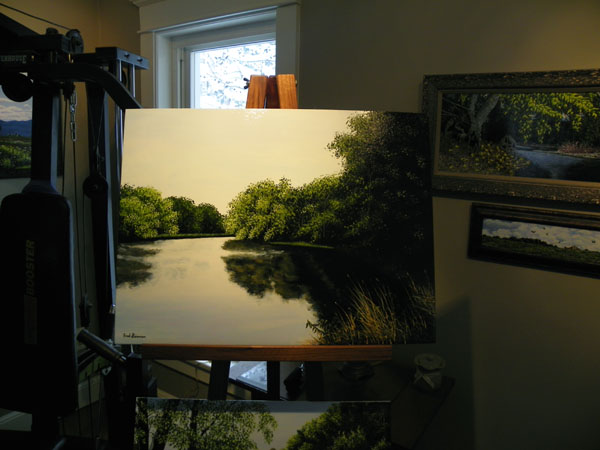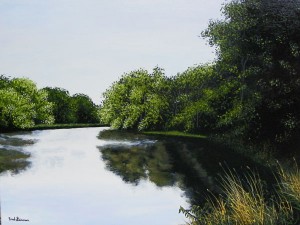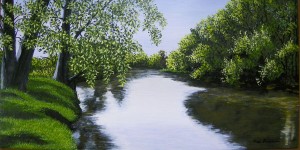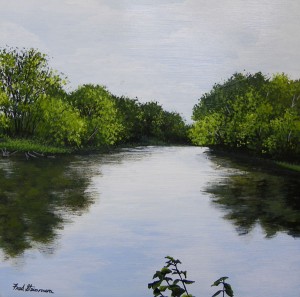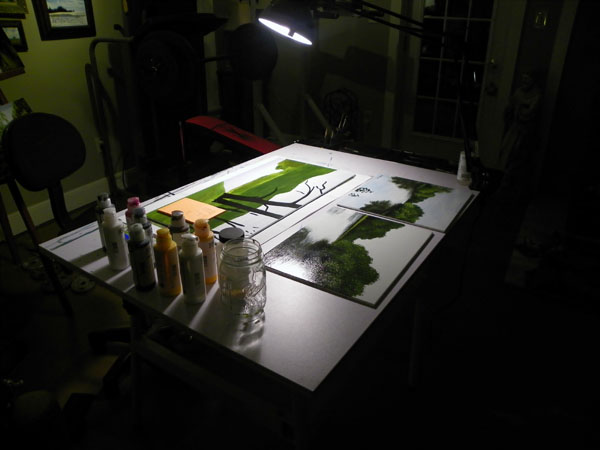
It has been hard to blog lately with the holidays and such but I wanted to get back at it. The above photograph is of my work surface. Is is a table that is 30″ deep by 42″ wide. The paintings are painted on standard hardboard as described below.
In this topic, I want to talk about the type of surface that I have used in the last few years for my detailed Acrylic paintings.
I find that the best surface to paint detailed Acrylic paintings on is standard hard board. The tempered hardboard has oil in it and is not acid-free. When I started painting after twenty five years off, I did my research and found out that standard hardboard is the surface of choice of many artist that paint detail in Acrylic.
I researched artist in “the Artist’s magazine” and found out that several of them paint on standard hardboard glued to cabinet grade plywood. Standard hardboard is fine by itself, if it is a smaller painting, but once you start painting larger paintings you needs the plywood to make it more firm.
I also went online to find out as much as possible about the artist that inspired me to paint again, when I had my “aha moment,” Fred Swan. After searching the web, the original paintings that I could find, that were for sale, were painted on hardboard.
That sealed it for me. That is all I have painted on since.
I have painted on canvas, in the past, but with my detailed style, I wanted to be able to lay the painting down flat on the painting table that I work on. I like to be able to rest my hand on the surface in order to get the extreme detail that I like to put in my work.
You can buy hardboard, pre-cut panels from any art supply shop or catalog but I like to make my own. I read an article in one of the issues of “the Artist’s magazine” and found an artist that cut his own hardboard out of standard hardboard that he got from a local building supply companies. He then glued it to cabinet grade plywood.
I prefer the quarter inch board over the eighth inch. It is much sturdier and can stand on its own without plywood if it is 18″ x 24″ or smaller.
After I cut the board on a large table-saw, I sand the edges and painting surface, remove all dust and put three coats of Acrylic Gesso. I sand each coat in-between and remove all dust. The board is then ready to paint on.
One thing I have also done is glue linen to the hardboard with Acrylic Soft Gel Medium and then put the three coats of Gesso on, sanding lightly in-between coats. This gives you a canvas look to the painting. The last few years I have preferred just to paint in the smooth surface of the prepared hardboard without the linen.
There are many other surfaces that you can paint on but this is my surface of choice. Good luck and happy painting!!!
